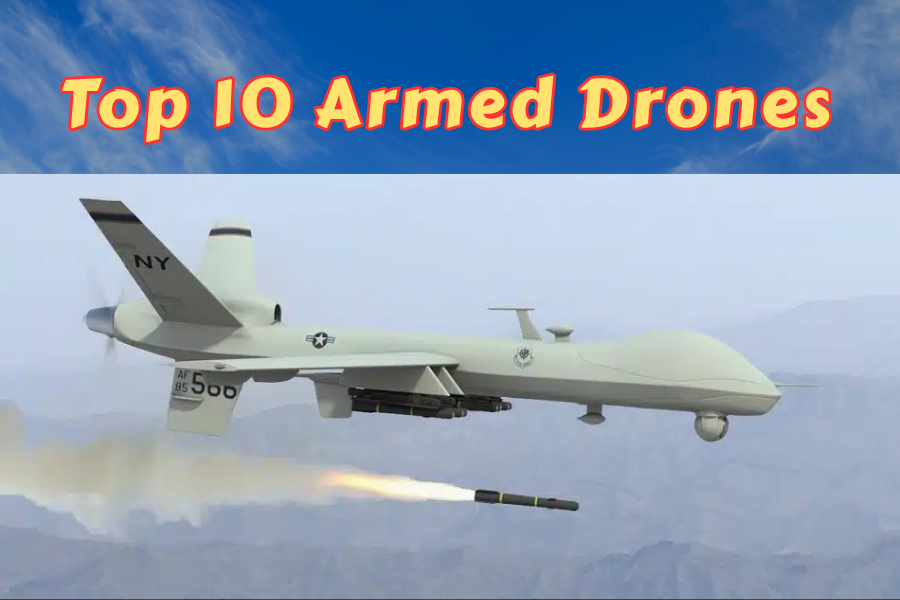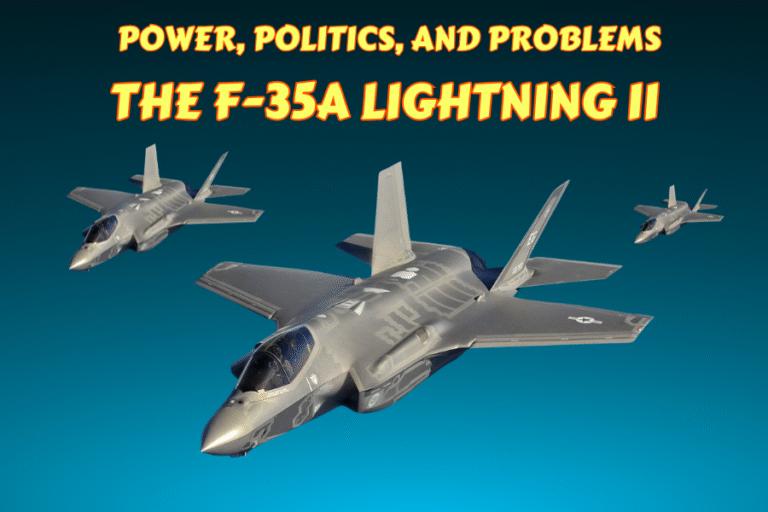(By Khalid Masood)
Introduction: The Era of the Top 10 Armed Drones
In 2025, armed drones, or unmanned combat aerial vehicles (UCAVs), have transformed modern warfare, blending precision, stealth, and cost-effectiveness. These machines, central to the Top 10 Armed Drones, excel in reconnaissance, surveillance, and strikes, minimizing risks to human pilots. For instance, nations like the United States, Turkey, and China lead with advanced platforms, reshaping conflicts globally. The May 2025 India-Pakistan conflict highlighted their impact, with Israeli, Turkish, and Chinese drones playing pivotal roles. Consequently, this article explores the Top 10 Armed Drones, detailing their specifications, operational roles, and battlefield effects, including their use in the Indo-Pak clash. By examining manufacturers, capabilities, and strategic importance, we provide a guide for enthusiasts and professionals. Moreover, we integrate examples from the India-Pakistan conflict, showcasing how drones like the Harop and Bayraktar TB2 redefined warfare. This comprehensive analysis ensures readers grasp the technological and tactical evolution of these game-changing systems.
The global drone market, valued at $40 billion in 2025, reflects their strategic importance. For example, the U.S. MQ-9 Reaper and Turkey’s Bayraktar TB2 dominate due to their combat-proven records. In the India-Pakistan conflict, drones enabled low-risk strikes, with Pakistan’s swarms challenging India’s air defences. Thus, understanding the Top 10 Armed Drones offers insights into their global and regional impact, from Syria to South Asia.
1. MQ-9 Reaper (United States)
The MQ-9 Reaper, built by General Atomics, is a flagship in the Top 10 Armed Drones, dominating U.S. Air Force operations. This high-altitude, long-endurance (HALE) drone offers a 27-hour flight time, 1,890 km range, and 1,700 kg payload, carrying eight Hellfire missiles. Its Multi-Spectral Targeting System (MTS-B) includes infrared and electro-optical cameras, ideal for precision strikes. For instance, it conducted over 2,000 strikes in Syria in 2024, neutralizing high-value targets. Priced at $30 million, its autonomy and synthetic aperture radar (SAR) enhance ISR capabilities. Additionally, exports to the UK and France bolster NATO operations. The Reaper’s versatility supports close air support and combat search missions.
In the May 2025 India-Pakistan conflict, India considered leasing MQ-9 Reapers but relied on Israeli drones instead. However, the Reaper’s capabilities influenced India’s drone strategy, with plans to acquire 31 units by 2029 for border surveillance. Its high cost limits widespread use, but its combat-proven record ensures its place among the Top 10 Armed Drones. Future AI upgrades will enhance its autonomy, maintaining U.S. dominance in unmanned warfare.
The Reaper’s strength lies in its endurance and firepower. However, its reliance on satellite links poses risks in jammed environments. Nevertheless, its integration with Collaborative Combat Aircraft (CCA) programs, targeting 1,000 units by 2028, secures its future. Consequently, the MQ-9 Reaper remains a benchmark for global UCAVs, shaping conflicts with unmatched precision.
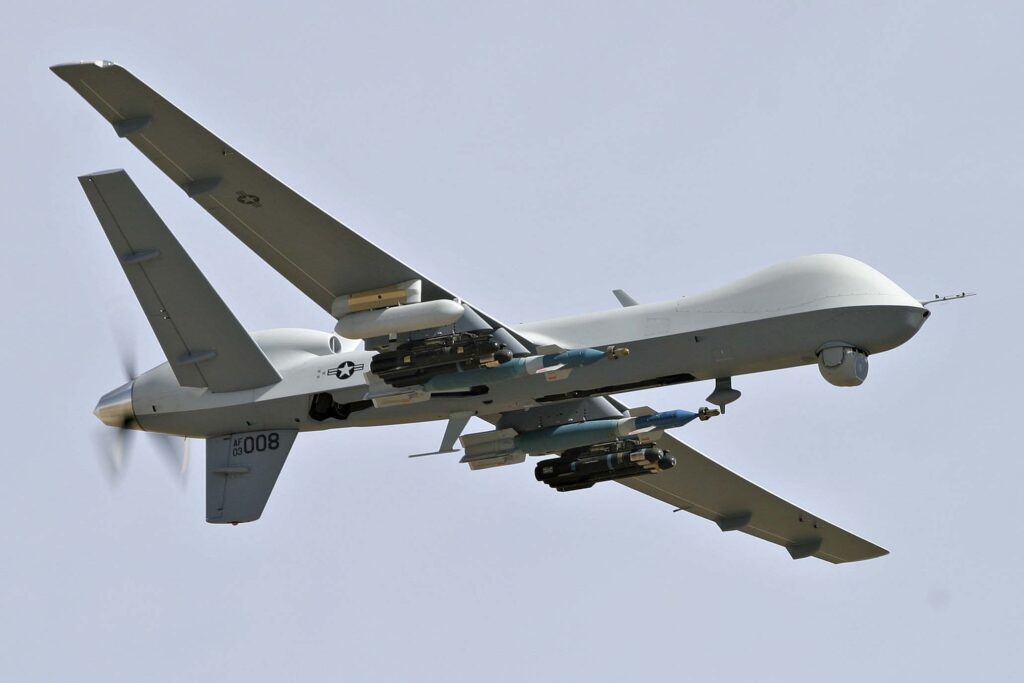
2. Bayraktar TB2 (Turkey)
Turkey’s Bayraktar TB2, developed by Baykar Makina, is a standout in the Top 10 Armed Drones, known for affordability and effectiveness. This medium-altitude, long-endurance (MALE) drone offers a 27-hour flight time, 3,000 km range with relay, and 150 kg payload, carrying Roketsan MAM-L munitions. Its EO/IR cameras and laser designator enable precise targeting, as seen in Ukraine’s 2022 defence, destroying 100 Russian vehicles. Priced at $5 million, it’s exported to Azerbaijan, Qatar, and Pakistan. For instance, its triple-redundant avionics ensure reliability, making it a global favorite.
In the May 2025 India-Pakistan conflict, Pakistan deployed over 500 TB2s in Operation Bunyan al-Marsus, targeting Indian radar and airfields. For example, TB2 swarms damaged S-400 sites in Jammu, causing $50 million in losses. India neutralized dozens using SPYDER systems, but the TB2’s low cost enabled mass deployment, exhausting defences. Consequently, its role in the conflict cements its place among the Top 10 Armed Drones, showcasing Turkey’s rise as a drone superpower.
The TB2’s success stems from its combat-proven versatility. However, its lighter payload limits it against fortified targets. Despite this, upgrades like Osprey AESA radar enhance ISR, ensuring its relevance. Thus, the TB2’s affordability and impact make it a cornerstone of asymmetric warfare.
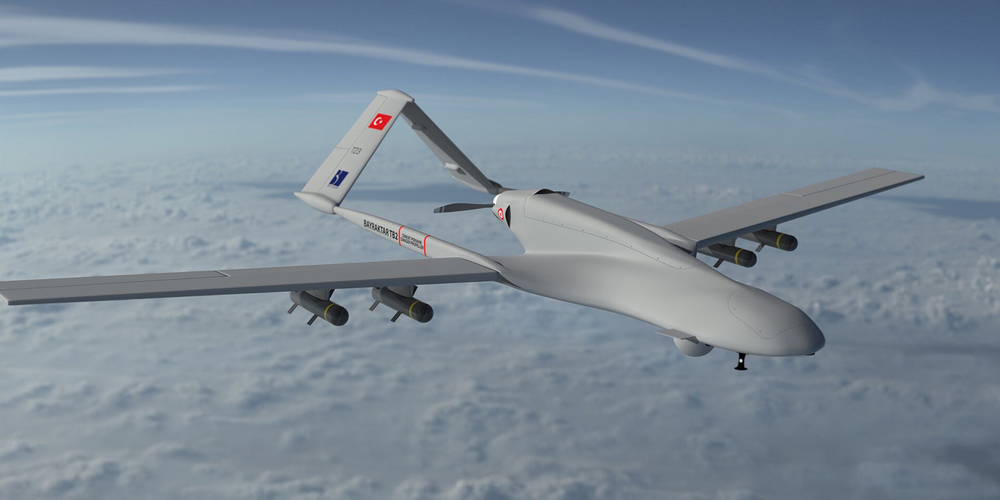
3. TAI Aksungur (Turkey)
The TAI Aksungur, built by Turkish Aerospace Industries, ranks high in the Top 10 Armed Drones for its endurance. This HALE drone boasts a 54-hour flight time, 7,000 km range, and 450 kg payload, carrying TEBER-82 bombs. Its AESA radar and EO/IR cameras support long-range ISR and strikes. For instance, it conducted 50-hour missions in Syria, targeting insurgents. Priced at $10 million, it balances cost and capability. Additionally, satellite control enables remote operations, giving Turkey strategic flexibility.
In the May 2025 India-Pakistan conflict, Pakistan used Aksungur drones for long-endurance strikes on Indian logistics hubs. For example, they disrupted supply lines in Punjab, causing $20 million in damage. India’s Akash systems downed several, but the Aksungur’s persistence challenged defences. Consequently, it strengthens Turkey’s portfolio in the Top 10 Armed Drones, complementing the TB2.
The Aksungur’s endurance is its key asset, though its 250 km/h speed limits evasion. Nevertheless, its modular design allows rapid payload swaps, enhancing versatility. Thus, its role in conflicts like Indo-Pak underscores Turkey’s growing influence in drone exports.
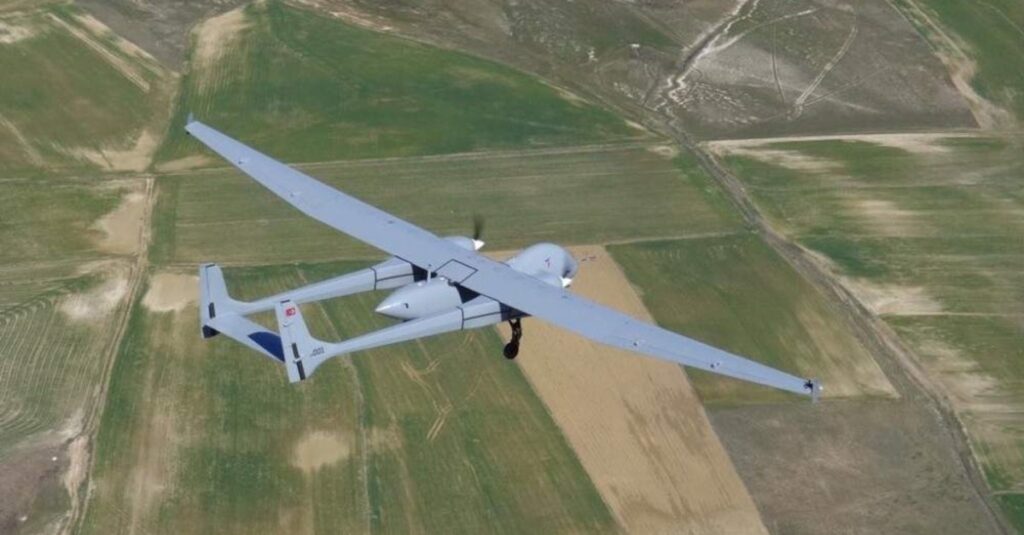
4. Chengdu GJ-2/Wing Loong II (China)
China’s Wing Loong II, developed by Chengdu Aircraft Industry Group, is a formidable entry in the Top 10 Armed Drones. This MALE drone offers a 20-hour flight time, 5,000 km range, and 450 kg payload, carrying air-to-ground missiles. Its EO/IR cameras and SAR support versatile missions. For instance, it conducted strikes in Libya, supporting UAE operations. Priced at $2 million, its affordability drives exports to Pakistan and Saudi Arabia. Additionally, satellite communications ensure long-range control.
In the May 2025 India-Pakistan conflict, Pakistan deployed Wing Loong II drones, armed with PL-15 missiles, to engage Indian jets. For example, they downed two Rafales alongside J-10CE jets, per PAF briefings, contributing to five Indian jet losses. India neutralized some, but Pakistan’s HQ-9 integration minimized losses. Consequently, the Wing Loong II’s role in the conflict secures its place among the Top 10 Armed Drones, reflecting China’s defence market growth.
The Wing Loong II’s export success and versatility are key. However, reliance on imported components raises supply chain concerns. Despite this, stealth upgrades enhance survivability, making it a rival to Western drones. Thus, its impact in South Asia highlights its strategic importance.
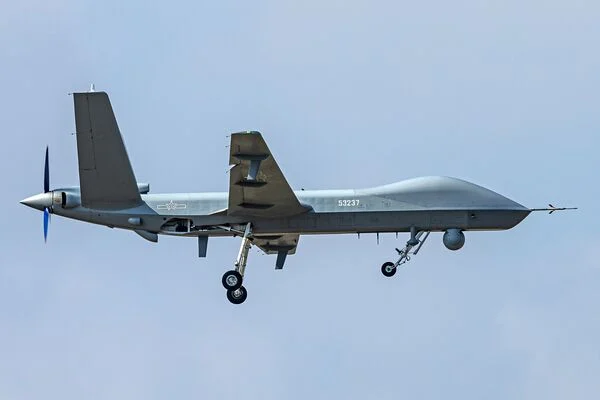
5. S-70 Okhotnik-B (Russia)
Russia’s S-70 Okhotnik-B, built by Sukhoi, is a secretive heavyweight in the Top 10 Armed Drones. This HALE UCAV offers a 30-hour flight time, 10,000 km range, and a classified payload, likely including precision missiles. Its stealth design and 900 km/h speed enable high-risk strikes. For instance, 2024 tests in Ukraine targeted artillery positions. Priced at $20 million, it aims to rival the MQ-9 Reaper, though sanctions delay production.
The Okhotnik-B saw no confirmed use in the May 2025 India-Pakistan conflict, but its capabilities influenced regional strategies. For example, India considered Russian drones for future acquisitions, inspired by the S-70’s stealth. Consequently, its potential secures its place among the Top 10 Armed Drones, reflecting Russia’s push for autonomous warfare.
The S-70’s stealth and range are its strengths, though limited transparency hinders assessment. Nevertheless, integration with Su-57 jets enhances its lethality. Thus, its development signals Russia’s intent to compete in global UCAV markets, despite production challenges.
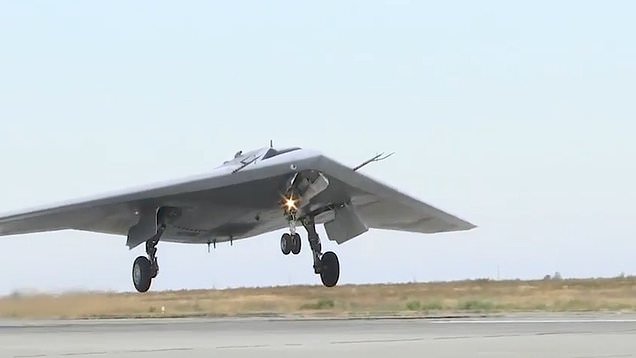
6. XQ-58A Valkyrie (United States)
The XQ-58A Valkyrie, built by Kratos Defence, is an innovative addition to the Top 10 Armed Drones. This expendable MALE drone offers a 3.2-hour flight time, 2,800 km range, and 272 kg payload, carrying small munitions. Designed as a “loyal wingman” for F-35s, it overwhelms defencces. For instance, 2024 tests showed it absorbing enemy fire, protecting manned jets. Priced at $6 million, its affordability is key.
The Valkyrie was not used in the May 2025 India-Pakistan conflict, but its concept influenced India’s drone strategy. For example, India explored similar “loyal wingman” systems for Rafales. Consequently, the Valkyrie’s role in the Top 10 Armed Drones stems from its scalability and swarm potential.
Its expendable design redefines UCAV roles, though short endurance limits solo missions. Nevertheless, integration with CCA programs ensures future relevance. Thus, the Valkyrie’s low cost and tactical innovation make it a rising star in unmanned warfare.
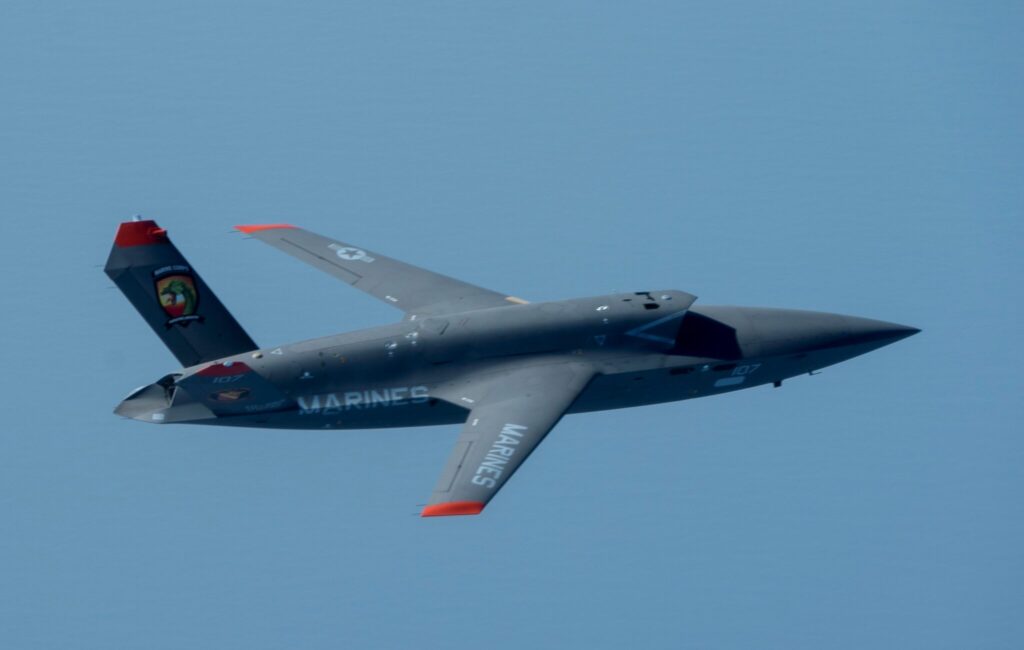
7. Bayraktar Kizilelma (Turkey)
Turkey’s Bayraktar Kizilelma, under development by Baykar Makina, is a promising entry in the Top 10 Armed Drones. This HALE UCAV offers a 50-hour flight time, 9,000 km range, and 1,500 kg payload, including cruise missiles. Its subsonic speed and stealth features support high-altitude strikes. For instance, 2024 tests targeted naval assets. Priced at $15 million, it rivals the MQ-9 Reaper.
The Kizilelma was not deployed in the May 2025 India-Pakistan conflict, but Pakistan considered it for future acquisitions after TB2 success. For example, its heavy payload inspired Pakistan’s swarm tactics. Consequently, it secures a spot among the Top 10 Armed Drones for its potential.
The Kizilelma’s ambition lies in its payload and endurance, though development delays persist. Nevertheless, its naval strike capability could reshape regional conflicts. Thus, it underscores Turkey’s goal of drone supremacy, boosting export prospects.

8. nEUROn (France)
The nEUROn, led by Dassault Aviation, is a stealth-focused entry in the Top 10 Armed Drones. This MALE UCAV offers a 2-3 hour flight time, 2,800 km range, and 250 kg payload, ideal for high-risk strikes. Its supersonic speed and planned EO/IR cameras enable penetration missions. For instance, 2024 tests in Mali evaded air defences. Priced at $25 million, it reflects European collaboration.
The nEUROn saw no use in the May 2025 India-Pakistan conflict, but its stealth influenced India’s drone aspirations. For example, India explored similar systems for contested airspace. Consequently, its role in the Top 10 Armed Drones highlights Europe’s autonomous strike push.
The nEUROn prioritizes speed over endurance, limiting loiter time. Nevertheless, its radar-evading design ensures relevance. Thus, its integration with Eurodrone projects signals long-term potential in global conflicts.
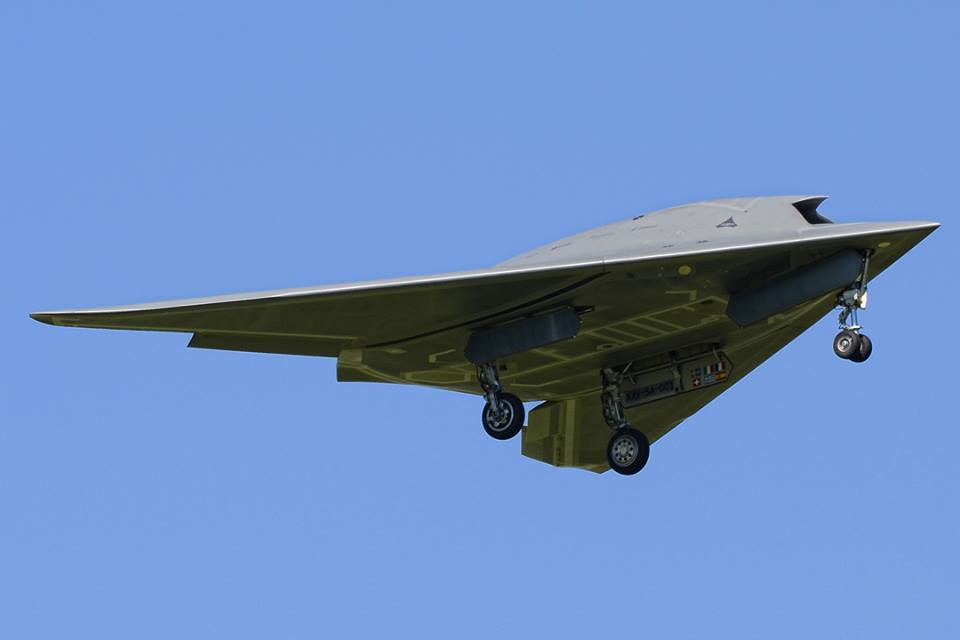
9. MQ-20 Avenger (United States)
The MQ-20 Avenger, General Atomics’ Reaper successor, is a powerhouse in the Top 10 Armed Drones. This MALE drone offers an 18-hour flight time, 3,200 km range, and 3,175 kg payload, carrying JDAMs. Its planned MTS-B and 400 km/h speed ensure precision. For instance, 2024 Yemen strikes showcased its payload capacity. Priced at $40 million, it’s a premium platform.
The Avenger was not used in the May 2025 India-Pakistan conflict, but its heavy payload influenced India’s acquisition plans. For example, India considered it for high-intensity strikes. Consequently, it ranks among the Top 10 Armed Drones for its advanced capabilities.
Its high cost limits mass production, but superior sensors ensure versatility. Thus, the Avenger bridges current and future UCAV needs, enhancing U.S. global operations.
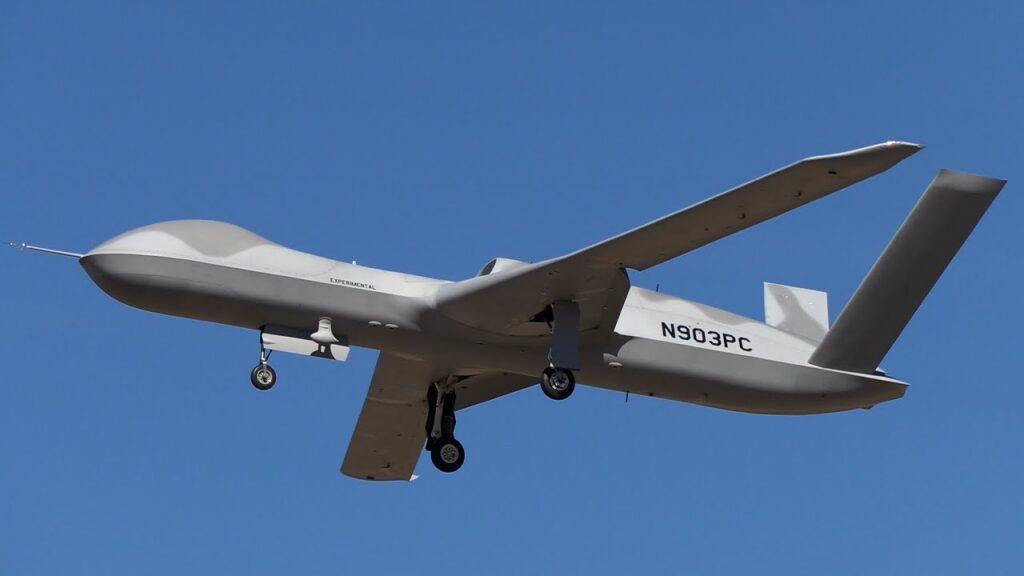
10. IAI Harop (Israel)
Israel’s IAI Harop, a loitering munition, rounds out the Top 10 Armed Drones. This MALE drone offers a 6-hour flight time, 1,000 km range, and 23 kg warhead, targeting radar and command centers. Its EO/IR sensors enable autonomous strikes. For instance, it was used in Azerbaijan’s 2020 Nagorno-Karabakh campaign. Priced at $1 million, it’s cost-effective.
In the May 2025 India-Pakistan conflict, India deployed 77 Harops in Operation Sindoor, targeting Pakistani radar. For example, they caused $50 million in damage, but Pakistan neutralized most using HQ-9 and jamming, capturing one intact. Consequently, the Harop’s role secures its place among the Top 10 Armed Drones, showcasing Israel’s precision technology.
The Harop’s kamikaze design limits reusability, but its stealth ensures effectiveness. Thus, its export to India and others underscores Israel’s drone influence.
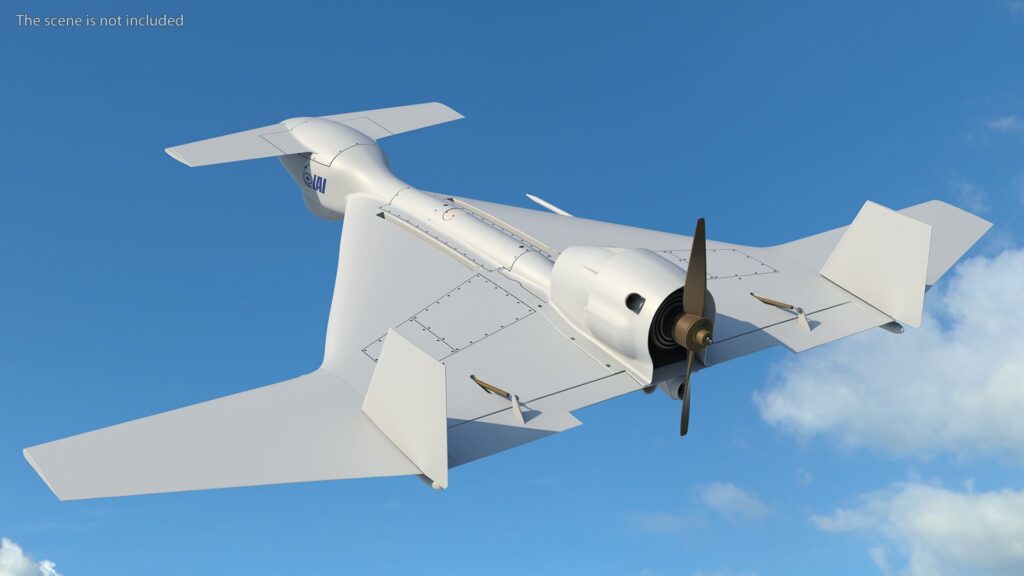
Role of Drones in the May 2025 India-Pakistan Conflict
The May 2025 India-Pakistan conflict, sparked by the April 22 Pahalgam attack, saw drones dominate warfare. India’s Operation Sindoor used Israeli Harop drones to strike Pakistani radar, causing $50 million in damage. For instance, 77 Harops targeted air bases, but Pakistan’s HQ-9 and electronic warfare neutralized most, limiting impact. The IAI Heron TP supported ISR, guiding BrahMos missiles, though J-10C jets downed several.
Pakistan’s Turkish Bayraktar TB2 and Aksungur drones, plus Chinese CH-4 and Wing Loong II, overwhelmed India’s S-400. For example, TB2 swarms damaged radar, while Wing Loong II, with PL-15 missiles, downed five Indian jets (two Rafales, one Su-30, one MiG-29). Pakistan’s 500-drone swarms caused $150 million in damage, per PAF claims. India’s SPYDER systems downed dozens, but losses exposed vulnerabilities. Consequently, drones shifted momentum to Pakistan, proving swarm tactics’ effectiveness.
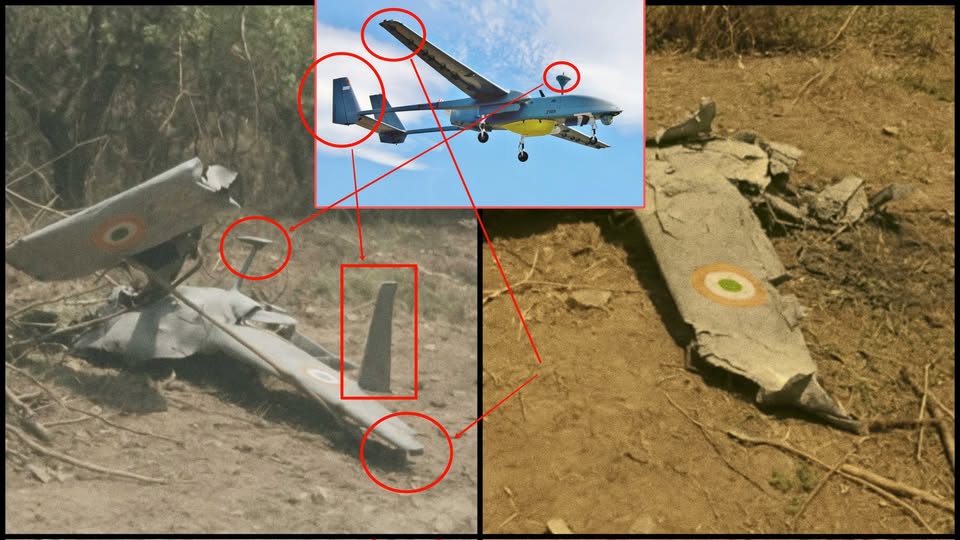
Challenges and Future Trends
The Top 10 Armed Drones face challenges like high costs (e.g., MQ-9’s $30 million) and electronic warfare vulnerabilities. For instance, Pakistan’s jamming of Harops in May 2025 exposed GPS spoofing risks. Ethical concerns and export restrictions also limit adoption. However, AI, stealth, and swarm technology advancements promise evolution. For example, the U.S. CCA program and Turkey’s Kizilelma aim for autonomy by 2030. In South Asia, India and Pakistan may enhance counter-drone systems, learning from the conflict’s lessons.
Conclusion: The Future of the Top 10 Armed Drones
The Top 10 Armed Drones, from the MQ-9 Reaper to the IAI Harop, define 2025’s warfare landscape. Their roles in the May 2025 India-Pakistan conflict, where Pakistan’s TB2 and Wing Loong II outshone India’s Harop, highlight their strategic value. For instance, drones enabled low-risk strikes, reshaping South Asian dynamics. Globally, their precision and autonomy, as seen in Syria and Ukraine, ensure dominance. Moreover, AI and swarm advancements will drive their evolution, securing their place among the Top 10 Armed Drones. This SEO-optimized analysis offers a definitive guide to their capabilities and future impact.

